| Click the topics below to open text description of some of our most recent meetings. |
| Click the topics below to open text description of some of our most recent meetings. |

Our "potluck"" picnic will be held on the museum grounds (inside if weather is an issue.) Bring a potluck dish, serving utensils, and chairs. NMHS will provide paper plates, napkins, cups, plasticware, regular and sweet iced tea and bottled water. Following our meal, we will have an update from the staff plus have time to visit the museum and tour outbuildings. The grounds close at 5 PM so our group will be the only ones with access. There will be no entry fee for our group. Also, during the evening, the group will pose for a picture at the Civil War-themed "LOVE" that uses iconic Civil War imagery (cannons, Signal Corps flags and rough-cut lumber from the museum''s bank barn).
|

NMHS member Ros Poplar is the current President of the Fort Harrison Chapter of Sons of the American Revolution (SAR).
It is a nonprofit corporation formed on April 30, 1889, honoring Revolutionary War patriot ancestors.
This non-partisan organization is dedicated to promoting patriotism, preserving American history, and promoting education to our future generations.
SAR activities include assisting veterans, assisting teachers with living history interpretations, lesson planning materials, and reenactment events for school-aged youth to attend.
Ros will share the objectives of SAR and how to become a member. A question-and-answer session will follow the presentation.
Joanne, Ros’s wife, will be present to answer any genealogical related queries. |

It was a Road Trip to History program released by Oak Tree Productions in 2006 as a part of a Public Broadcasting Service series. This 25-minute program brings back memories of sights in New Market and the surrounding area as 14 then-locals share snippets about New Market’s attractions on “The Great Valley Road”. Attendees are welcome to bring photos, written stories, and memorabilia about the New Market area. There will be a sharing time after the DVD. Light refreshments will be provided. |

The Shenandoah County Library's Truban Archives is a unique collection of historic primary resources related to the history of Shenandoah County and the various people who have called this area home.
Founded in 2001, and named for the Truban Family who helped fund its creation, the Archives contains tens of thousands of documents, photographs, pamphlets, books, and other materials dating from the 17th century through today.
|

|

|

|
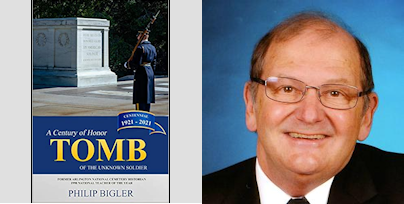
|

|

|

|

The evening started with about 30 attendees enjoying an indoor "potluck" picnic. This was even more enjoyable considering the high 90 degree temperatures outside. After eating, the group received a presentation by Rev,. Buz Menhardt who detailed the history of the school. The Academy was started by the gift of 42+ acres in 1905 from Charles Zirkle to the Virginia Conference of Seventh Day Adventists. He wanted to have a school built for Adventist youth education. Two years later construction began on the school which so far has had approximately 5,500 graduates. The presentation was followed by a tour of some of the buildings.
|

Members and guests learned about the Shenandoah County court system and the over 30-year service of Retired Judge, Dennis L Hupp.
Judge Hupp began his law practice in the Shenandoah County courts before becoming a judge and will continue to his service through 2024, to complete the four-year term vacated by Judge Thomas Mann, who has been appointed to the Supreme Court of Virginia.
The Shenandoah County Courthouse in Woodstock has been in use from the 1790s and has undergone several renovations over the years as shown in the slideshow Judge Hupp used as part of the presentation. |

Nicholas Picerno, Chairman of the Shenandoah Valley Battlefields Foundation, spoke on tracing Civil War ancestors. He demonstrated the on-line resources available for conducting Civil War genealogies as well as explain how archives and historical societies can assist with ancestor research.
|

It was our first meeting in the New Market Town Council Chamber since the November 21, 2019 presentation on Civil War Medicine presented by Jake Wynn. |

The rain finally quiit, a Fall coolness filled the air and 18 NMHS members and guests accepted the kind invitation from Ros and Joanne Polar to picnic on their lawn.
This was the first NMHS event since our January Dinner Meeting on January 23, 2020 due to recommended COVID protocols.
After a potluck picnic dinner the visitors were treated to a tour iof the Poplar's late 1700's home on the original Jacob Holeman 1749 land grant.
|

After enjoying a delicious buffet catered by the Southern Kitchen, the 62 guests moved the short distance from Farrow Hall to the sanctuary where they were thoroughly entertained by Davis Tierney and Zac Bell
of the Frontier Culture Museum in Staunton. Davis and Zac presented through lecture and live performances the cultural influences from the early valley immigrants that blended together to form the music we hear today.
|

Pictured left is Jake Wynn, Director of Interpretation for the National Museum of Civil War Medicine in Frederick Maryland, addressing the attendees at our November 21 meeting. |

Pictured at left is Terry Heder, Director of Interpretation, Education and History for the Shenandoah Valley Battlefields Foundation at our September 26 meeting. |

Following a "potluck" picnic in the outdoor seating area of the Heartpine Cafe the NMHS group spread out to visit the various buildings featured in the Luray Valley Museum. We started in the Stonyman building which houses historic items from pre-contact native peoples to life in the bustling 1920s. We then moved on to the 7 acre recreation of a small 19th century farming community including the Hamburg Regular School, the Elk Run Dunkard Church, and much more. We thank Rod Graves for his kind invitation to visit this unique museum and each vowed to return on their own to continue exploring this extremely interesting collection. |
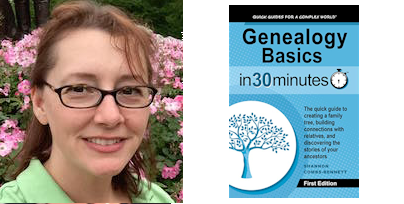
This program was scheduled to be presented on May 24 but due to an unfortunate family emergency Shannon was unable to attend. She did prepare a video so that the presentation could proceed but technical difficulties resulted in a less than satisfactory showing.
So, with Shannon's permission, we are offering the video presentation, the Powerpoint slideshow and the handout for you to view online.
|

Eric Buckland seen pictured above addressing the NMHS March program audience. Eric has written several books on some of the men who rode with the 43rd Battalion Virginia Cavalry - better known as "Mosby's Rangers". This presentation focused on the many similarities that existed between the tactics, techniques and procedures used by the famed Rangers during the Civil War and today's United States Special Operations Forces, especially the Army's Special Forces ("Green Berets"). After a 22-year career, Eric retired as a Lieutenant Colonel with a majority of his military career spent in Special Forces.
|

A good crowd braved the dropping temperatures to begin the evening with a delicious buffer prepared and presented by Rutz's BBQ and Catering. The New Market Community Center's Gym was divided into a "cafe" on the right and a "movie theater" on the left.
|

About 30 people braved the constant rain to attend the September NMHS meeting to hear about Virginia Rockart sites from Virginia's rockart expert Jack Hranisky. Jack spent most of the evening discussing local rockart
sites Paintlick Mountain in Tazewell County, Spout Run in Clarke County, and Short Mountain located near Mt. Jackson. The Short Mountain site is estimated to date around 1400AD. Jack also passed around a rock tool estimated to be about 20,000 years old.
|

The picture at left shows some of the group attending our annual picnic - waiting for the dinner bell.
This year's event was held at the Crim/Clinedist home in New Market which is owned by the Shenandoah Valley Battlefield Foundation(SVBF).
Its CEO, Keven Walker, hosted the event and presented talks about the history of the home, then led a tour of several of the rooms featuring the authentic period furnishings.
The current and future plans of SVBF for the home and the New Market area were also presented.
|

Rod Graves, curator of the Luray Museum, talks about the importance and workings of forges and furnaces in the early settling of the Page and Shenandoah Valleys.
His extensive knowledge of iron making was demonstrated by a slideshow and examples of iron works from both valleys which he brought from the Museum for our program. |
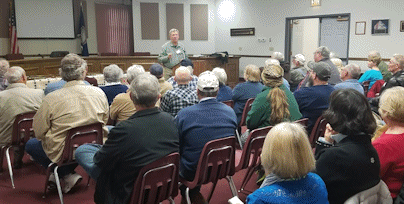
On Thursday evening, March 22, a little bit of history was made at our March meeting when 49 attendees viewed probably the largest collection of Spitzer long rifles ever assembled at one time. Through the efforts of John Adamson, Joe Minnick, Bert Sours, and Sam Koontz 14 rifles were on display. |

About 75 people attended our annual dinner meeting at the New Market Community Center on January 25, 2018. After a delicious buffet served by Rutz's BBQ and Catering we were treated to an excellent program by musicians Arden Clark and Kevin Smith.
Concentrating on the music of Stephen Foster, Daniel Emmett, A.P. Carter and even Johnny Horton just to name a few, the songs were introduced by sharing a story or anecdote prior to its performance. Many songs were presented as a singalong with the audience joining in.
|

Camp Sherando Lake was occupied during the depression by the Civilian Conservations Corps who helped build the Skyline Drive and Blue Ridge Parkway. Abandoned in 1942 with the call-up of men for the armed services, the camp was reopened in August 1944 as Camp Lyndhurst and became a compound for the prisoners of war.
|

Pictured left is Dr. Carole Nash addressing the 40+ guests attending our September 28 meeting. Dr. Nash thoroughly entertained the group with a presentation detailing the Indian presence in the Shenandoah Valley into the 18th century. She also spent time describing the local Quicksburg
Archaeological site and the characteristics of the "Indian Mounds" unique to the Valley.
|

Lt. Col. Troy Marshall (center in front of mural) is seen addressing the NMHS members at our annual picnic meeting. Held indoors this year because of questionable weather, Troy
entertained the group with as much informaion as they could hold relative to the Battle of New Market and its place in the New Market community.
After a "potluck" picnic dinner the guests were free to roam the museum.
An extremely informative, enjoyable (and dry) evening was had by all. |

Pictured left is Dr. John Butler, a leading expert on forensic DNA profiling, helping the 40+ attendees to understand the
question - What Can DNA Testing Tell Me About My Ancestry? |

The Blue Ridge Heritage Project is a grassroots effort to create monuments and related displays that will tell the story of the people
of the Blue Ridge Mountains and to honor the sacrifices they made so that the Shenandoah National Park could be established.
Project founder Bill Henry, pictured left addressing the NMHS audience, described how his experiences in the park led to the discovery of its relatively unknown remarkable history.
|
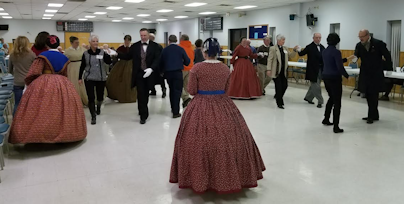
Great food, great music, great dancing, great friendship, a overall great night. With food by Rutz's BBQ & Catering, music by the Mutton Busters, dancing led by the Shenandoah Valley Civil War Era Dancers and the friendship of our members and guests
the night could not have been a more enjoyable event. Tom Mack with the help of his wife Lesley began with a history or 1800's dancing. He explained the dance steps used in a specific dance then invited the attendees to join in - and that they did.
The dance floor was kept full the whole evening. |
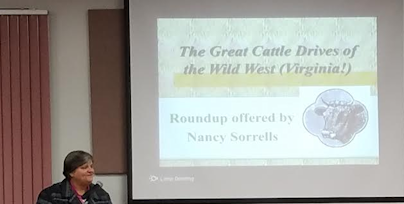
Nancy Sorrells, pictured above, was the presenter at our November 17 meeting. The evening started with a brief business meeting conducted by President Dean Clatterbuck, featuring the election of officers for 2017. Program Director Jim Douglas then introduced Nancy who co-authored a book entitled Virginia's Cattle Story: The First Four Centuries. Nancy began with the arrival of cattle from the British Isles landing in Jamestown in 1620, the cows then adapting to feeding off of the grasses available in Virginia, and ending with their current day source of dairy and meat products. Nancy knowledge and enthusiasm made for a very interesting evening. |

President Dean Clatterbuck welcomes the audience of about 50 people who attended our annual "New Market Remembers" meeting.
This year's topic, "growing up in the sixties", was presented via a slide show showing the town of New Market as it existed in the 60's featuring
the hangouts and haunts of the teenagers of that time. Danny Rice led the panel of Lynda Estep and Jeryl Sellers who acted as the tour guides through the slideshow
with frequent help from audience members. |

Chris Anderson, Director of the White House Farm Fundation, addresses a group of NMHS members and guests at the NMHS 2016 picnic meeting. The group, braving extremely threatening skies, is pictured behind the White House,
built as a residence & Mennonite meeting house in 1760 by Martin Kauffman II. |

Well, you picked the wrong night to miss a NMHS meeting. The Shenandoah Valley Minstrels put on quite a show. The 7 member group, formed in 2009, entertained our 35 guests with songs from the civil war/Victorian era. Each song, introduced by a different group member, provided details as to the author, popularity, and any background information as to its purpose or influence. The hour and a half show was extremely well received and I guarantee that we will ask the Shenandoah Valley Minstrels for a return visit. |

In the Shenandoah Valley, many settlers in the 18th and early 19th centuries were German-speaking immigrants from various political entities of the Rhineland, especially Alsace, the Palatinate, and several Swiss cantons.
They brought with them a unique culture that left a permanent imprint on the Shenandoah and made major contributions to the development of a new "American" culture.
Dr. Daniel Bly helped us explore several basic questions about these people: who were they, and why did they leave their European homelands?
Why did they choose to settle in the Shenandoah Valley? What is the legacy of these early German pioneers? |
 On Thursday evening, January 28, after a delicious buffet dinner, 75 guests were treated to a look at the world of cartooning by John Rose, pictured above
describing the work behind one of his editorial cartoons. During his presentation he walked the group through the Clinton, Bush and Obama years by displaying editorial cartoons published during their administration and the thoughts behind the creation of each one.
He also shared some cartoons on current presidential candidates.
John is also the artist behind the Snuffy Smith/Barney Google cartoons and shared some of those character drawings with details behind the work involved in drawing a newspaper comic strip.
On Thursday evening, January 28, after a delicious buffet dinner, 75 guests were treated to a look at the world of cartooning by John Rose, pictured above
describing the work behind one of his editorial cartoons. During his presentation he walked the group through the Clinton, Bush and Obama years by displaying editorial cartoons published during their administration and the thoughts behind the creation of each one.
He also shared some cartoons on current presidential candidates.
John is also the artist behind the Snuffy Smith/Barney Google cartoons and shared some of those character drawings with details behind the work involved in drawing a newspaper comic strip.
It was an extremely interesting and enjoyable evening. |
 Our November meeting featured Neva Hart, a retired quilt appraiser who spends her time researching Virginia's Quilt History.
Our November meeting featured Neva Hart, a retired quilt appraiser who spends her time researching Virginia's Quilt History.Through the use of slides, Neva showed how different regions of the state of Virginia have developed different motifs. She explained how to identify Virginia quilts and quilts made in our own Shenandoah Valley. She also detailed how local history can be uncovered by examining the contents and style of each quilt. Those attending will benefit from her experience and should be able to identify a locally made quilt. The evening ended with refreshments and much conversation among the 25 attendees. |
 Our September meeting featured presentations detailing the history of two of our local churches.
Our September meeting featured presentations detailing the history of two of our local churches. The Rev. Brent Hockema, pictured on the left above, has been the pastor at Smith Creek Regular Baptist Church since June 1, 2008. Brent shared the history of the church since its beginning in 1756. Richard Harkness, member of Manor Memorial United Methodist Church, pictured on the right, explained the growth of the New Market Methodist Episcopal Church founded about 1832 to the present day "United" Methodist Church. The evening concluded with refreshments and much conversation among the 35 attendees. |
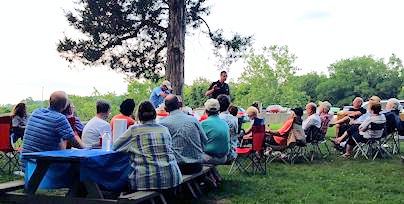
Paul Murphy shown explaining the relationships between the Colonel Brown family, prior longtime owners of Endless Caverns, and the Woodrow Wilson family to the 34 picnic attendees at Endless Caverns. Paul is researching the Wilson/Brown history for an upcoming book. Paul is the owner of the Rosedale Inn near Endless caverns. |

Scott Jost, associate professor of art at Bridgewater College, answers a question during the Q & A session after his presentation on Thursday evening, May 28. Scott read from the oral histories of apple growers who live and work in the Shenandoah Valley and Blue Ridge regions of Virginia. His presentation also included color photographs of the apple growers' orchards and workplaces. Scott also placed Virginia's apple industry in historical context and shared stories about the process of collecting oral histories and making photographs for his book Shenandoah Valley Apples. |

On Thursday evening, March 26, Harrisonburg author Greg Owen extended the theme examined by Otto Bettman in his classic 1974 book "The Good Old Days - They Were Terrible". Greg guided about 40 guests through 55 slides depicting life in the Shenandoah Valley during the post civil war era, 1865-1900. He explained why the "good old days" were only good for a privileged few and unrelentingly hard for most valley residents. It was an enlightening evening with a good time had by all. |

The scene to the left from "Field of Lost Shoes" depicts the VMI cadets marching to battle in New Market. On Thursday evening, January 22, 94 guests attended the NMHS "Dinner and A Movie" event at the Quality Inn in New Market. After a delicious buffet and short business meeting the guests viewed the 2014 film "Field of Lost Shoes". The film follows 7 VMI cadets on their journey to the Battle of New Market and their actions on the actual field of lost shoes. It was an enjoyable evening and a good time was had by all. |
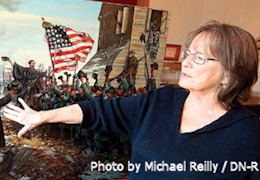 On Thursday evening, November 20, about 50 attendees listened to Donna Neary's presentation entitled "What's a woman doing here?".
On Thursday evening, November 20, about 50 attendees listened to Donna Neary's presentation entitled "What's a woman doing here?". Donna, a historical artist, NMHS Charter Member, and retired Lt. Colonel, detailed her distinguished career as a combat and field artist for the United States Marine Corps. Donna displayed numerous examples of her commercial and historical artwork from children's books and many national magazines. She also displayed artwork from her visit to South Korea, north of the Arctic Circle and Somalia. Further information about Donna including a portfolio of her work can be viewed at her website at donnaneary.com. |
 On Thursday evening, July 24, NMHS held their annual picnic meeting at Shenandoah Caverns. After a tour of the American Celebration on Parade float museum, and a historical overview of Shenandoah Caverns by Joe Proctor, the group of approximately 30 sat down to enjoy a delicious pot-luck picnic.
On Thursday evening, July 24, NMHS held their annual picnic meeting at Shenandoah Caverns. After a tour of the American Celebration on Parade float museum, and a historical overview of Shenandoah Caverns by Joe Proctor, the group of approximately 30 sat down to enjoy a delicious pot-luck picnic.
|
 Patrick Murphy addresses the attendees at our May 22 meeting providing details from his book “The French and lndian War in Shenandoah County: Life on the lnner Frontier, 1752-1766”.
There were in the Valley no pitched battles, no classic sieges of fortified places, no lines of men opposing one another. The victims of the conflict were not soldiers, but old men, farmers, pregnant women, and children. Indian raids into the County were frequent and often horrendous. This reminded readers of this earlier and important period in Shenandoah County.
Patrick Murphy addresses the attendees at our May 22 meeting providing details from his book “The French and lndian War in Shenandoah County: Life on the lnner Frontier, 1752-1766”.
There were in the Valley no pitched battles, no classic sieges of fortified places, no lines of men opposing one another. The victims of the conflict were not soldiers, but old men, farmers, pregnant women, and children. Indian raids into the County were frequent and often horrendous. This reminded readers of this earlier and important period in Shenandoah County.
|
 Terry Heder, Director of Interpretation and Communications for the Shenandoah Valley Battlefields Foundation(SVBF), addresses the attendees at our March 27 meeting at the Lee-Jackson Building (Hotel), the SVBF headquarters. Terry and Janice Hannah, Donor Relations Manager, shared their knowledge of the history of the Lee-Jackson Building then detailed the SVBF's current programs, future programs, and future plans for the Lee-Jackson.
Terry Heder, Director of Interpretation and Communications for the Shenandoah Valley Battlefields Foundation(SVBF), addresses the attendees at our March 27 meeting at the Lee-Jackson Building (Hotel), the SVBF headquarters. Terry and Janice Hannah, Donor Relations Manager, shared their knowledge of the history of the Lee-Jackson Building then detailed the SVBF's current programs, future programs, and future plans for the Lee-Jackson.
|
 Jeffrey Evans has been professionally auctioneering since he was 12 years old. Over the years he has developed a business auctioning and appraising many fine arts developed here in the Shenandoah Valley. He has a special interest and expertise in chairs made in the Shenandoah Valley in the 18th, 19th, and 20th centuries. He has also developed a special knowledge of pie/food safes designed and built in the Shenandoah Valley. Jeffrey will share photos as well as stories about chairs and pie/food safes.
Jeffrey Evans has been professionally auctioneering since he was 12 years old. Over the years he has developed a business auctioning and appraising many fine arts developed here in the Shenandoah Valley. He has a special interest and expertise in chairs made in the Shenandoah Valley in the 18th, 19th, and 20th centuries. He has also developed a special knowledge of pie/food safes designed and built in the Shenandoah Valley. Jeffrey will share photos as well as stories about chairs and pie/food safes.
|
 Bob Cohen is in the middle of his presentation to 77 attendees on the history of the railroads that ran and run through the Shenandoah Valley.
Bob Cohen is in the middle of his presentation to 77 attendees on the history of the railroads that ran and run through the Shenandoah Valley.
|
 About 25 history buffs boarded a bus and left New Market about 7 o'clock for the Gettsyburg National Military Park. NMHS Board Director Greg Bair shared his knowledge of the Battle of Gettsyburg and the civil war in general and led us on a day long tour of the park. It was quite an experience hearing about the numerous battles and skirmishes from a veteran of many Gettysburg reenactments. After dinner at General Pickett's Buffet we headed back to New Market arriving about 9 o'clock ending a great bus trip.
About 25 history buffs boarded a bus and left New Market about 7 o'clock for the Gettsyburg National Military Park. NMHS Board Director Greg Bair shared his knowledge of the Battle of Gettsyburg and the civil war in general and led us on a day long tour of the park. It was quite an experience hearing about the numerous battles and skirmishes from a veteran of many Gettysburg reenactments. After dinner at General Pickett's Buffet we headed back to New Market arriving about 9 o'clock ending a great bus trip.
|
Copyright © 2015 - All Rights Reserved - newmarkethistoricalsociety.org